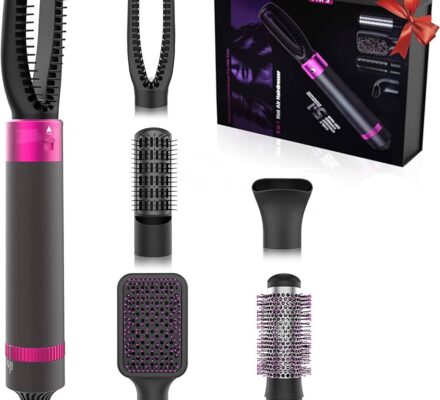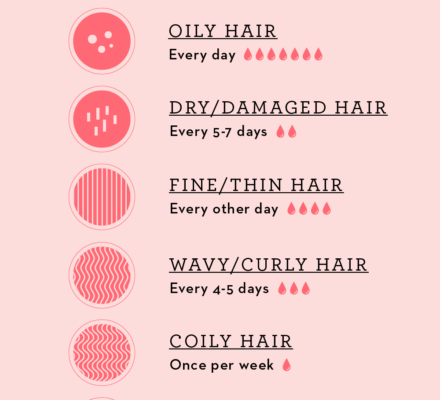
Heat-styling your hair incorrectly can result in irreparable damage, particularly for color-treated hair; overheated heaters could even strip its color. The question then is, what is the best hair straightener temperature settings to use?
Finding the optimal temperature is critical when selecting a hair straightener as heat damage can cause frizz, dry or dull appearance and even breakage of your locks. In an ideal world, your straightener should get hot enough that it singes your locks but without being so scorching that it singes or damages cuticle structures or singes hair cuticle layers.
The best hair straighteners come equipped with digital displays that let you monitor temperature rise over time, making it easier to keep an optimal level of heat.
Armed with the right information, using your flat iron responsibly and for hair’s health is easier than ever. Here are a few tips to help determine what hair straightener temperature settings will work best for your particular type of hair:
Hair straightener temperature for fine hair
If you have fine hair, then you understand its fragility. Any exposure to excessive heat can damage it. Moreover, colour-treated fine hair require special consideration when styling with heat tools like flat irons. Therefore, use only low temperature settings so as to minimize potential damages caused by using your flat iron incorrectly.
When it comes to flat irons or hair straighteners, there is an array of choices from various brands with various features and prices available on the market – but not all are created equally when it comes to heat settings.
Similarly, if your locks are thin and delicate, using the appropriate temperature setting for straightening may help avoid damage to them. Furthermore, bleaching or using chemical straightening formula may have already compromised their strength making the selection of an optimal temperature setting all the more critical.
Today’s best flat irons provide various heat settings that you can tailor to meet the specific needs of your hair, such as the BaByliss Pro Nano Titanium 1.5-Inch Straightener with five heat settings to cater for individual tresses. Incorporating thermal protectant products like the ghd Straight & Smooth Heat Protection Spray into styling your locks before styling is another effective way of mitigating potential damage risks.
Medium Hair
For those with medium hair that’s either wavy or curly, the requirements for straightening vary somewhat from those with fine or coarse textures. When straightening medium textures like yours, a flat iron with medium heat setting should work best; your curls or waves require high temperatures in order to look sleek and straight, yet excessive damage shouldn’t occur from too high of temperatures being used to straighten them out.
Medium hair textures require a flat iron with temperatures ranging between 350 to 400 degrees Fahrenheit for safe use, although chemically treated locks may need something closer to 350 to prevent irreparable damage to their strands.
Flat irons with medium heat settings should be easy to use on short hair. Their plates usually feature smaller sizes that make them easier to navigate across shorter strands than larger plates would. When choosing materials like ceramic, tourmaline, or titanium plates for straightening short hair, look for those made from less damaging materials like ceramic or tourmaline. These tend to heat up slower than metal irons which reduce damage while locking in moisture and reducing static electricity, helping keep your locks smooth.
Coarse hair type
Your hair straightener’s heat setting should reflect the type of hair that you have. While it might be tempting to go all-out and use the highest temperature setting possible, that will only lead to irreparable damage and won’t look healthy and shiny once dry.
Hair straighteners typically operate between 300 and 425 degrees. No matter your hair type, however, temperatures that surpass 400 degrees should always be avoided as these temperatures can cause irreparable damage to the locks that makes styling more difficult in the future. Heat damage also significantly slows hair growth which will only impede styling further down the line.
For normal hair that is medium length or shorter, the middle temperature setting should be optimal. This setting works best with strong enough strands to withstand more heat without becoming impossible to straighten. If your strands have become damaged or fine over time, start at the lowest setting possible and work your way up the scale as necessary.
When straightening coarse, wavy or curly hair, a higher heat setting is advised as these textures can withstand more heat and can straighten faster than fine or thin strands. Be sure to apply heat styling protecting spray prior to straightening with your straightener, and lock the setting between 300-350 degrees – titanium plates instead of tourmaline ceramic are better suited to thicker manes.
Thick hair straightener temperature
Thicker and curlier hair types tend to require higher heat settings when straightening, as well as greater damage protection from styling tools such as curling irons. Therefore, it’s essential that a quality heat protector be used prior to any heating tool usage.
Start out at a lower temperature, increasing it gradually as you go along. An ideal straightener heat setting for thick hair could range anywhere between 300-350 degrees, depending on its texture and your personal preferences.
Hair with thick or curly strands often takes more time and effort to straighten, but you can make the process quicker by using a round brush first. This will help smooth out kinks so you don’t have to keep straightening multiple times over.
When selecting the ideal flat iron for your thickness and curls, titanium plates should be given priority. They allow you to quickly heat up to high temperatures so you can straighten your hair without suffering too much damage from overheating. Furthermore, this type of iron maintains consistent heat longer without needing constant reapplication – saving both time and reducing unnecessary heat damage which can brittle and damage hair quickly.
How to Find the Best Hair Straightener Temperature
300 to 350 Degrees
Although it might appear that increasing the heat setting would benefit hair, too much heat can actually weaken it and increase damage risk.
Flat iron temperatures ranging between 300 and 350 degrees are recommended for those with normal, healthy hair. This will enable them to straighten their locks more efficiently with fewer passes and thus reduced overall heat exposure.
Experts agree that this temperature is ideal for most women with straight hair. A lower heat level protects from unnecessary damage while helping keep bleached colors intact for as long as possible.
All experts advise starting off at a lower heat setting, then gradually increasing it over time. If you have fine hair, a low-to-mid temperature range should work best, while those with thick or coarse textures should use higher settings initially.
It is recommended to use a lightweight heat protectant spray such as Living Proof’s PhD Heat Styling Spray or Drybar’s Hot Toddy Heat Protectant Mist prior to flat iron styling, for optimal results. Individuals with curlier or wavy locks may benefit more from heavier protective balms like Amika’s Blockade Heat Defense Serum.
400 to 450 Degrees
Modern flat irons feature multiple heat settings, and many people assume the highest setting is best for all hair types. Unfortunately, too high of temperatures can damage strands instead of straightening them out as desired.
Normal and healthy hair requires an optimal temperature of approximately 350 degrees, but for curly and wavy locks requiring greater curl definition, higher temperatures may be necessary to create your desired style.
If you want a sleek and smooth appearance, consider opting for a flat iron with ceramic plates. Ceramic irons tend to be less damaging than those featuring metal or titanium ones and can be used daily without risk of further damaging strands. A good option would be HerStyler Colorful Seasons straightener; its nine heat settings range from 270-460 degrees while its ceramic coating helps eliminate frizz while simultaneously straightening.
450 to 500 Degrees
Finding the appropriate temperature when it comes to straightening hair can be key in minimizing damage and maintaining its health, yet finding one suitable to your particular hair type and texture may prove challenging.
Thick and curly locks typically require higher heat settings to achieve straightness; however, you must still be wary not to exceed the recommended temperature range or you risk serious damage and dryness to your strands.
Not only should you select an appropriate heat setting, but also take into consideration the plate material of your flat iron to make it gentler on your hair and help minimize damage through lower temperatures.
So the next time you want to ensure your strands are as straight as possible, keep these tips in mind and remember that applying a good heat protectant prior to styling will further limit exposure.



